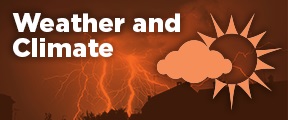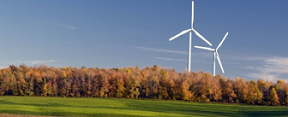|
|
| |
|
|
| |
|
|
| Climate change data introduction |
|
| |
 COPIED
EPA CLIMATE CHANGE DATA COPIED
EPA CLIMATE CHANGE DATA
As you know the EPA is being censored and systematically
dismantled. I decided to spend a few days copying the EPA
climate change data verbatim before it disappears for good.
This includes text, images, graphs, and tables. The data is
now sitting on the servers of this site and is uploaded in a very
readable and user friendly fashion. You would
think there is no reason to do this, since no doubt, all
climate scientists from the EPA, NASA, NOAA, are all rushing
to make backup copies of the climate change pages. You might
also be thinking this project is pretty anal, even for me,
but there is a method to my madness. |
|
 Climate
Change Indicators: Weather and Climate Climate
Change Indicators: Weather and Climate
Rising global average temperature is associated with
widespread changes in weather patterns. Scientific studies
indicate that extreme weather events such as heat waves and
large storms are likely to become more frequent or more
intense with human-induced climate change. This chapter
focuses on observed changes in temperature, precipitation,
storms, floods, and droughts.
Continue reading.... |
|
|
 Climate
Change Indicators: Oceans Climate
Change Indicators: Oceans
Covering about 70 percent of the Earth’s surface, the
world’s oceans have a two-way relationship with weather and
climate. The oceans influence the weather on local to global
scales, while changes in climate can fundamentally alter
many properties of the oceans. This chapter examines how
some of these important characteristics of the oceans have
changed over time.
Continue reading.... |
|
|
 Climate
Change Indicators: Snow and Ice Climate
Change Indicators: Snow and Ice
The Earth’s surface contains many forms of snow and ice,
including sea, lake, and river ice; snow cover; glaciers,
ice caps, and ice sheets; and frozen ground. Climate change
can dramatically alter the Earth’s snow- and ice-covered
areas because snow and ice can easily change between solid
and liquid states in response to relatively minor changes in
temperature. This chapter focuses on trends in snow,
glaciers, and the freezing and thawing of oceans and lakes.
Continue reading.... |
|
|
|
 Climate
Change Indicators: Ecosystems Climate
Change Indicators: Ecosystems
Ecosystems provide humans with food, clean water, and a
variety of other services that can be affected by climate
change. This chapter looks at some of the ways that climate
change affects ecosystems, including changes in wildfires,
streams and lakes, bird migration patterns, fish and
shellfish populations, and plant growth.
Continue reading.... |
|
|
 Climate
Change Indicators: Health and Society Climate
Change Indicators: Health and Society
Changes in the Earth’s climate can affect public health,
agriculture, water supplies, energy production and use, land
use and development, and recreation. The nature and extent
of these effects, and whether they will be harmful or
beneficial, will vary regionally and over time. This chapter
looks at some of the ways that climate change is affecting
human health and society, including changes in Lyme disease,
West Nile virus, ragweed pollen season, heat-related deaths
and hospitalizations, heating and cooling needs, and the
agricultural growing season across the United States.
Continue reading.... |
|
|
|
 Climate
Change Impacts: Region Climate
Change Impacts: Region
The climate changes facing our planet vary greatly depending
on the region. Differences in impact go from slight, to
moderate, to great, with some findings actually pointing in
the other direction....although not many. This chapter looks
at the impacts of climate change on an international level
and on a United States regional level. Note: I wrote this
introduction....it was not from the EPA site. |
|
|
 Climate
Change Impacts: Sector Climate
Change Impacts: Sector
The climate changes facing our planet vary greatly depending
on the sector in question. Differences in impact go from
slight, to moderate, to great, with some findings actually
pointing in the other direction....although not many. This
chapter looks at the impacts of climate change on various
sectors in the United States. Note: I wrote this
introduction....it was not from the EPA site. |
|
|
|
|
|
|
|
|
|
|
|
|
|
|
Additional Climate Change Information |
Climate Change and Carbon Dioxide
(Beginner - Listening,
reading)
A video lesson to
help with your understanding of climate change
and carbon dioxide.
The English is
spoken at 75% of normal speed.
Great English listening and reading practice. |
Carbon Dioxide and Climate Change
(Beginner - Listening,
reading)
A video lesson to
help with your understanding of carbon dioxide
and climate change.
The English is
spoken at 75% of normal speed.
Great English listening and reading practice. |
Environmental Group Warns Earth's Health at Risk
(Beginner - Listening,
reading)
A video lesson to
help with your understanding of climate change.
The English is
spoken at 75% of normal speed.
Great English listening and reading practice.
A report by the World Wildlife Fund looked at thousands of animal populations
and found they have dropped significantly in 40 years. |
Sea Levels Rising at Fastest Rate in 3,000 years
(Beginner - Listening,
reading)
A video lesson to
help with your understanding of climate change.
The English is
spoken at 75% of normal speed.
Great English listening and reading practice.
A group of scientists say sea levels are rising at record rates. Another group
found that January temperatures in the Arctic reached a record high. |
Capturing CO2 Gas Is Not Easy
(Beginner - Listening,
reading)
A video lesson to
help with your understanding of climate change.
The English is
spoken at 75% of normal speed.
Great English listening and reading practice.
Most scientists agree that carbon-dioxide gas is partly to blame for climate
change: rising global temperatures. But capturing the CO2 gas released by power
stations is costly and difficult. |
Growth, Climate Change Threaten African Plants and
Animals
(Beginner - Listening,
reading)
A video lesson to
help with your understanding of climate change.
The English is
spoken at 75% of normal speed.
Great English listening and reading practice.
Researchers believe Africa may lose as much as 30 percent of its animal and
plant species by the end of this century. |
|
|
|
|
Search Fun Easy English |
|
|
|
|
|
|
|
|
|
|
|
|
|
|
|
About
Contact
Copyright
Resources
Site Map |